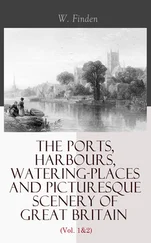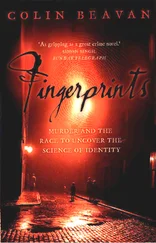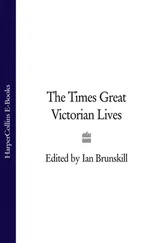(1953-74), edited by James Strachey, Alix Strachey and Alan Tyson. This essay concerned one of Freud's first patients, the eighteen-year-old 'Dora'.
CHAPTER 18
261
In October 1865 . . . behind Millbank's high walls.
Information on Millbank gaol from
The Criminal Prisons of London and Scenes of London Life
(1862) by Henry Mayhew and John Binny;
The Princess Casamassima
(1886) by Henry James; and the
Penny Illustrated Paper
of 14 October 1865.
262
In 1866 he married his landlady . . . sheep grazed on the green.
From Whicher's marriage certificate, on which he described himself as a bachelor, not a widower. Hippolyte Taine referred to sheep grazing outside Westminster Abbey in his
Notes on England
(1872).
263
Private inquiry agents . . . Ignatius Pollaky.
Pollaky had become a successful private detective with offices at 13 Paddington Green, near the railway station. In 18
66,
according to
The Times,
he broke a ring of white slave traders who were kidnapping young women in Hull and selling them in Germany. A song in Gilbert & Sullivan's comic opera
Patience,
which opened in London in 1881, praised 'the keen penetration of Paddington Pollaky'. He died in Brighton in 1918, aged ninety.
263
The work was well-paid . . . to divorce her.
From a report in
The Times
of 9 December 1858.
263
In his new role Whicher took part . . . the Tichborne Claimant.
Account of the case of the Tichborne Claimant from:
Famous Trials of the Century
(1899) by J.B. Atlay;
The Tichborne Tragedy: Being the Secret and Authentic History of the Extraordinary Facts and Circumstances Connected with the Claims, Personality, Identification, Conviction and Last Days of the Tichborne Claimant
(1913) by Maurice Edward Kenealy;
The Tichborne Claimant: A Victorian Mystery
(1957) by Douglas Woodruff;
The Man Who Lost Himself
(2003) by Robyn Annear; and reports in
The Times.
264
'It has weighed upon the public mind like an incubus.'
From
The Tichborne Romance
(1872) by A Barrister At Large (A. Steinmedz), quoted in
Victorian Sensation
(2003) by Michael Diamond.
266
'I
daresay you hear me frequently abused . . . Your Old Friend, Jack Whicher.'
Quoted in
Scotland Yard: Its History and Organisation 1829-1929
(1929) by George Dilnot.
267
Jack Whicher was still living . . . until death.
From census returns of 1861, 1871, 1881, marriage certificate of Sarah Whicher and James Holliwell, and Holliwell's citation for the Victoria Cross.
267
'It is a very curious story . . . the detective prime?'
Dickens quote from a letter to W.H. Wills - see
The Letters of Charles Dickens 1868-870
(2002), edited by Graham Storey, Margaret Brown and Kathleen Tillotson. Robert Louis Stevenson letter of 5 September 1868 quoted in
Wilkie Collins: The Critical Heritage
(1974), edited by Norman Page.
269
In 1927 T.S. Eliot compared . . . fallible.'
From an article in the
Times Literary Supplement
of 4 August 1927.
270
Henry James characterised . . . works of science.'
From 'Miss Braddon', unsigned review in
The Nation,
9 November 1865.
270
In May 1866 Samuel Kent renewed his plea . . . congestion of the lungs.
Papers on Samuel Kent's application to retire on full pay in HO 45/6970. In March the annual report of the factory inspector Robert Baker had referred to the great wrong done to Samuel in the years since Saville's death. An extract from Baker's account of his colleague's trials, including the 'threatened blindness' and subsequent paralysis of Mrs Kent, was published in
The Times
on 24 March 1866. According to her death certificate, Mary Kent died at Llangollen on 17 August 1866 - Samuel was present at her death.
270
That summer he was awarded . . . common and cruel.
See
The Times,
9 July 1866.
271
Through the winter of 1867.
Information about William Kent's life after 1865 from
Savant of the Australian Seas
(1997) by A.J. Harrison. An electronic second edition of this biography, completed in 2005, is available on the STORS website of the State Library of Tasmania - members.trump.net.au/ahvem/Fisheries/Identities/ Savant.html.
271
He gave the name 'retrospective prophecy' . . . a word as "back-teller"!' said Huxley.
From the essay 'On the Method of Zadig: Retrospective Prophecy as a Function of Science' (1880). In
Lady Audley's Secret
Mary Braddon described the detective's procedure as 'retrograde investigation'. The American philosopher Charles Sanders Peirce developed his theory of 'abduction', or retrospective deduction, in about 1865. 'We must conquer the truth by guessing,' he wrote, 'or not at all.' For the idea of 'backward hypothesising', see:
The Sign of Three: Dupin, Holmes, Peirce
(1983), edited by Umberto Eco and Thomas A. Sebeok;
The Perfect Murder
(1989) by Peter Lehman; and
Forging the Missing Link: Interdisciplinary Stories
(1992) by Gillian Beer.
272
'Alone, perhaps, among detective-story writers . . . more essential and more strange.'
From
Appreciations and Criticisms of the Works of Charles Dickens
(1911) by G.K. Chesterton. Chesterton was adapting Job 19: 'For I know that my redeemer liveth, and that he shall stand at the latter day upon the earth' (King James Version of the Bible).
Others have found the endings to detective stories disappointing: 'The solution to a mystery is always less impressive than the mystery itself,' wrote Jorge Luis Borges in the short story 'Ibn Hakkan-al-Bokhari, Dead in His Labyrinth' (1951). 'Mystery has something of the supernatural about it, and even of the divine; its solution, however, is always tainted by sleight of hand.'
273
He left his money . . . joint executors.
From Samuel Kent's will, dated 19 January 1872 and proved by William on 21 February that year.
273
In January 1872 Samuel Kent . . . of a stillborn boy.
Biography from
Savant of the Australian Seas
(1997, revised 2005) by A.J. Harrison;
Guidebook to the Manchester Aquarium
(1875) by William Kent;
A Manual of the Infusoria
(1880-82) by William Kent; death certificate and will of Samuel Kent; birth announcement in
The Times;
marriage certificates of William Kent; census of 1881.
275
In 1875 William's wife . . . obstruction of the bowel.
According to the death certificate, she died in Withington, Manchester, on 15 February.
275
Jack and Charlotte Whicher . . . fields of lavender.
Lavender Hill information from:
Directory for Battersea Rise and the Neighbourhoods of Clapham and Wandsworth Commons
(1878);
Directory for the Postal District of Wandsworth
(1880);
The Buildings of Clapham,
edited by Alyson Wilson (2000); and
Battersea Past,
edited by Patrick Loobey (2002).
276
In the summer of 1881 . . . went to his wife.
From Whicher's death certificate, will and probate in the Family Records Centre and the Court of Probate.
Читать дальше












